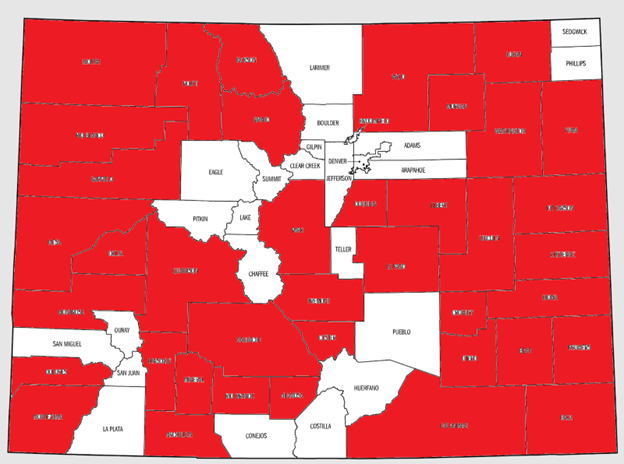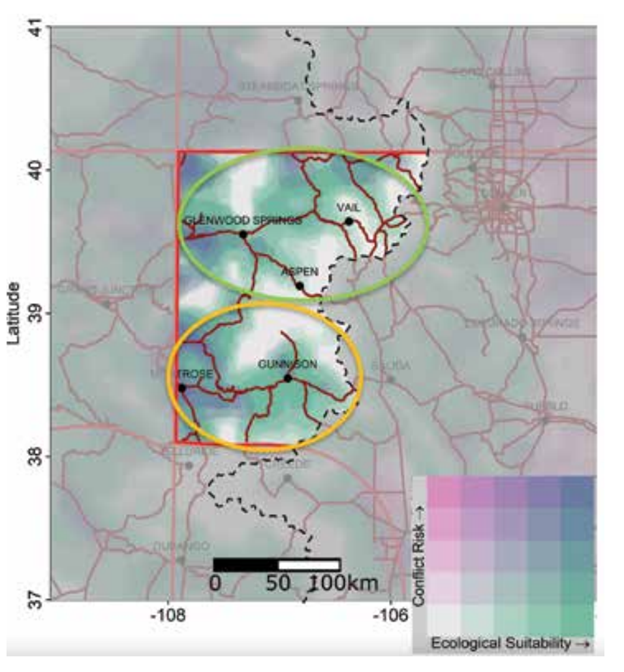YOU READY?
Are you ready for wolves? Is Colorado ready for them? Only time will tell. In November of 2020, voters in the state of Colorado approved Ballot Initiative 114 which mandated that Colorado Parks and Wildlife restore wolves to the state of Colorado. Three years and one long planning process later, wolves are scheduled to hit the ground in Colorado later this winter. You may or may not have heard a lot about this since the measure was passed 3 years ago but now that the reintroduction plan has been finalized; I thought it was time to dig into it a bit more to figure out how this might impact myself and fellow hunters moving forward.
THE PLAN
For those of you with more time on your hands than you know what to do with, I offer you a gift. The formal wolf reintroduction plan, all 261 glorious pages of it. I will be honest and say that I have not read the whole thing through. I’ve got a 2 month old at home and a full time job, so I do not have that sort of free time. But for those that do and prefer to get their information from the source, go with my blessing. For those of the TL;DR persuasion, settle in.
EAT FRESH REFRESH
But first, a refresher. How did we get here? I would argue we got here via ballot box biology and out of state money. But why trust my opinion on that front, the best article I’ve been able to find on that topic came out three years ago authored by Alesandra Tejeda of the Colorado Independent. A couple of the takeaways that I will reiterate here. At the time of her article she had identified a number of sources for the funds that were being used by The Rocky Mountain Wolf Action Fund to gather signatures to get this proposition on the ballot in Colorado. At the time RMWAF had a war chest of $800,000 with only $10,000 clearly identified as coming from sources from inside Colorado and the biggest chunk, $264,000, coming from The Tides Center, a progressive San Francisco-based charity that calls itself “the leading fiscal sponsor for social change initiatives in the United States,”. So when people complain that California money pushed wolves into Colorado, they have something to stand on there. This was also the first time that reintroduction of an endangered species was decided at the ballot box. Previous to this ballot initiative being put forth to Colorado voters, the Colorado Parks and Wildlife Commission had discussions around the reintroduction of wolves into the state on numerous occasions and had never suggested the reintroduction of an apex predator into a state with a growing population and a struggling mule deer herd. But Wolf advocates found a way around that at the ballot box.
THE DIVIDE
Another piece to this puzzle that I always thought interesting is that there was specific language in Ballot Initiative 114 that required the reintroduction of wolves to take place on the west side of the continental divide. For those of you unfamiliar with what that is, it’s a boundary that runs north south through Colorado that acts as a dividing line. Water that falls to the west of that line ends up in the Pacific Ocean. Water that falls to the east of that line should eventually end up in the Atlantic Ocean. The main population centers of Colorado all fall to the east of that line and most voted in favor of the measure. The majority of the people to the west of that line where the wolves would actually be introduced voted against the measure. One opponent of this measure was the Colorado Stop the Wolf Coalition. One of the things they did was to reach out to the different counties of Colorado and ask that they come out against the reintroduction of wolves. 39 of Colorado’s 64 counties came out with resolutions against the reintroduction of wolves. That list can be found on their website, stopthewolf.org. Their website just included a list of the counties that had come out against wolf reintroduction so it was difficult for me to understand the breadth of the opposition and where that opposition was coming from. If they were all counties in eastern Colorado, who really cares. The immediate introduction wouldn’t really affect them and it would be easier to dismiss their concerns. So I pulled out a map and started coloring in red the counties that didn’t want wolves reintroduced. The scope and location of opposition surprised me. Also take into account that the counties in white, to my knowledge, did not come out in outright support of the reintroduction, they just did not actively oppose it.

THE FUTURE
Now that I feel like we’ve gotten a decent baseline for where we started, let’s now look ahead to where we’re going. Per their plan, CPW intends to reintroduce 10-15 wolves for the next 3-5 years into the areas highlighted below. With the first batch of wolves expected to be on the ground before the end of 2023.

But just because that is where CPW is sticking them does not mean that is where they will stay. The study that CPW references in their plan showed that when wolves were reintroduced elsewhere, in the months that followed they were as far as 140 miles from where they were released. So take the above image and do what you will with it, the wolves aren’t going to care that CPW once had their home ranges in nice little green and yellow ovals.
THE POLIS VETO
And I will admit to being a procrastinator and I know I did tease this article quite some time ago but one of the reasons I was waiting was to see what Governor Polis would do with Senate Bill 23-256 that passed both the state house and senate. This bill would have delayed the reintroduction of wolves into the state until the federal government could make a determination on whether they would grant Colorado’s request that this reintroduced population of wolves be described as experimental. All that really means is that Colorado would have greater leeway in how they manage reintroduced wolves. Under the current federal rules, the only way you could kill a wolf in Colorado is if it is endangering a human life. Per the Coloradoan, the Forest Service has committed to have that ruling in place by December 15th of this year. And we’re all very confident in government entities to not only deliver on their promises but to deliver on time, right? Right? If wolves hit the ground prior to this ruling getting sorted out, ranchers could be in a world of hurt if those wolves decide they like the taste of mutton and beef as much as humans do. Oh yeah, Polis vetoed the bill so all this is all still happening by the end of the year. Also I am glad I don’t work for CPW this year, if they wait till the Forest Service hands down a ruling on this being an experimental population, they will have exactly 16 days to get wolves on the ground. No Christmas vacation for you.
WHERE WOLVES?
Another interesting piece to all of this is, where are the wolves going to come from? 9news had a pretty interesting article on that topic. Essentially the answer, at least for today, is that CPW does not know. Wyoming and Utah have come out and said they won’t be providing any wolves to Colorado. They reached out to a number of states to see if CPW had indeed reached out formally to request wolves be relocated to Colorado. All the states listed in the plan as potential sources of donor wolves, Idaho, Montana, Washington and Oregon, have all said no formal talks have yet to take place. And I thought I was the procrastinator here.
THE END OR THE BEGINNING?
So that’s what I know. Or what I think I know at this particular time. There’s a lot of moving parts here and not a ton of remaining runway on which to course correct before it becomes very real for the people of western Colorado. Maybe a little too real for the woman interviewed for this piece. A Frisco, Colorado resident who voted for Prop 114 three years ago. She was told about the proposed reintroduction sites and the potential for wolves to be near neighbors in the not too distant future. She didn’t like it. Should we let her change her vote? It seems like everyone likes wolves but perhaps they like the idea of wolves more than they actually like the animal itself? Regardless, it will be interesting to watch as wolves are reintroduced onto the landscape of Colorado. What will their impact be on the ungulate herds? And what does that mean for hunter opportunity? How will ranching need to change as a result? How will public opinion on wolves change over time? Only time will tell.